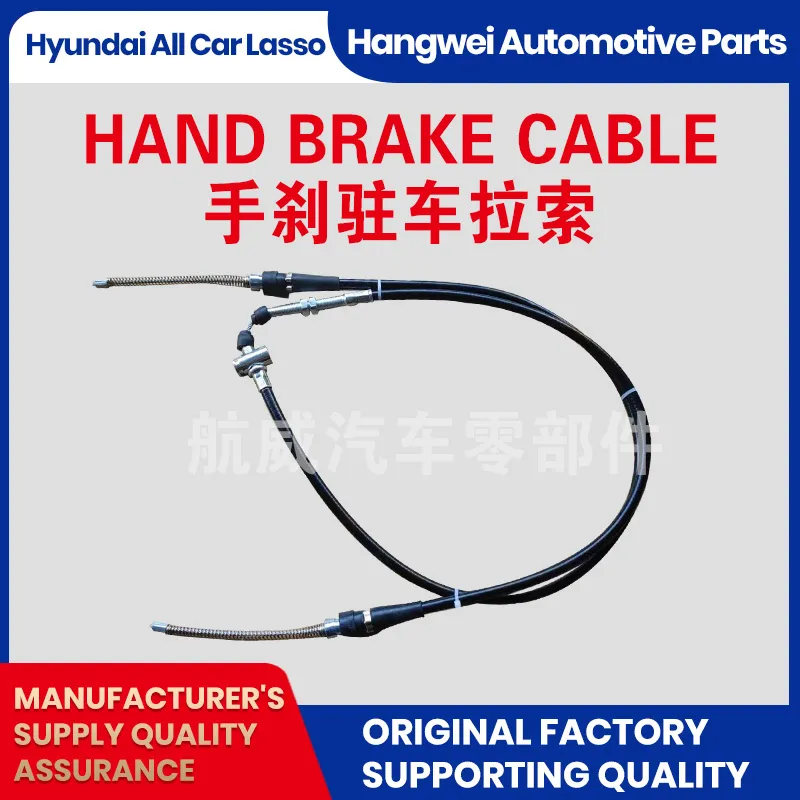gear cable for car
Understanding Gear Cables for Cars An Essential Guide
In the complex machinery of automobiles, every component plays a crucial role in ensuring seamless functionality. Among these components, the gear cable stands out as a critical element in the vehicle's transmission system. Gear cables facilitate the smooth shifting of gears, and understanding their function, types, maintenance, and replacement can empower vehicle owners to maintain their cars better and ensure optimal performance.
What is a Gear Cable?
A gear cable, often referred to as a shift cable, is a flexible conduit that transmits the movement from the gear shifter to the transmission system of the car. When a driver shifts gears, the gear cable pulls or pushes on a lever in the transmission, allowing the vehicle to change gears seamlessly. This transformation is crucial for the car's acceleration, deceleration, and overall driving experience.
Types of Gear Cables
Gear cables can vary in design and application depending on the type of transmission system
1. Manual Gear Cables In vehicles with manual transmissions, the gear cable connects the gear lever directly to the transmission. This direct linkage ensures that the driver's gear selection is immediately transmitted to the transmission, allowing for maximum control and responsiveness.
2. Automatic Gear Cables Automatic transmissions use a more complex system where the gear cable may interface with various components including sensors and control units. These cables are designed to handle the TV (Throttle Valve) cable in some automatic systems, which determines the timing of gear shifts based on engine load and speed.
3. Bicycle Gear Cables While not directly related to cars, it’s worth noting that similar gear cables are used in bicycles for shifting gears. These cables operate on the same principle transferring the motion from the shifter to the derailleur.
Signs of a Failing Gear Cable
gear cable for car

Like any mechanical component, gear cables can wear down over time. Here are some common symptoms indicating that the gear cable may need to be inspected or replaced
- Difficulty Shifting Gears If the gear shifter feels stiff or unresponsive, it may indicate that the cable is frayed, corroded, or damaged. - Unexpected Gear Changes Inconsistency in gear changes, such as jumping out of gear or slipping, can also point to cable issues. - Visible Damage Inspecting the cable for signs of wear, such as kinks, breaks, or rust, is crucial. Any visible damage warrants immediate attention. - Unusual Noises Grinding, popping, or rattling sounds when shifting can indicate that the cable is not functioning properly.
Maintenance of Gear Cables
Regular maintenance of gear cables can prolong their life and ensure smooth operation. Here are some tips
- Regular Inspections Periodic checks of the gear cables for wear and tear can help catch issues early. - Keep it Clean Dirt and grime can accumulate on the cables over time, leading to corrosion. Cleaning the cables and surrounding areas can mitigate this problem. - Lubrication Applying a suitable lubricant can help maintain flexibility in the cable and ensure smooth operation. However, one should be cautious with the type of lubricant used, as some may attract dirt.
Replacement of Gear Cables
When gear cables wear out, replacement is essential to maintain driving performance. Replacing a gear cable typically involves
1. Diagnostic Assessment A professional mechanic will confirm whether the gear cable needs replacing. 2. Removal of Old Cable The old cable is disconnected from both the shifter and transmission assembly. 3. Installation of New Cable The new cable is threaded through the appropriate pathways and secured properly. 4. Testing Once installed, the mechanic will conduct tests to ensure the new cable is functioning correctly.
Conclusion
Understanding the function and maintenance of gear cables is vital for every car owner. Regular checks and prompt replacement can prevent larger transmission issues and preserve the integrity of the vehicle. Whether driving a manual or automatic car, ensuring your gear cable is in good condition will enhance your driving experience and ensure safety on the road. As with any automotive component, investing time in maintenance will yield significant dividends in performance and reliability.
-
Workings of Clutch Pipe and Hose SystemsNewsJun.04,2025
-
The Inner Workings of Hand Brake Cable SystemsNewsJun.04,2025
-
The Secrets of Throttle and Accelerator CablesNewsJun.04,2025
-
The Hidden Lifeline of Your Transmission Gear Shift CablesNewsJun.04,2025
-
Demystifying Gear Cables and Shift LinkagesNewsJun.04,2025
-
Decoding Clutch Line Systems A Comprehensive GuideNewsJun.04,2025
